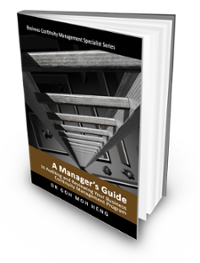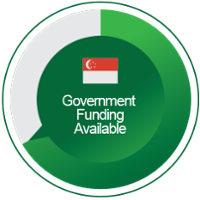Conduct the Audit
Once the opening meeting is completed and it is time to start the first meeting with the Auditee, arrive and meet the executive Auditee. This internal representative will be assigned to the assigned business unit manager.
Document Audit Activities and Findings
Working Papers are documentary evidence obtained from the Auditees. The content of the papers is analyzed so as to achieve audit conclusions. Audit working papers provide the basis for the findings and audit recommendations to be reported.
Audit working papers are a key part of the evidence used by Auditors in arriving at the BCM Audit conclusions and recommendations.
Workpaper Reference
This is the content of a typical set of working papers, or sometimes referred to in short as workpaper.
Table of Content for Workpaper
|
Section |
Description of Workpaper |
|
A |
Audit Program |
|
B |
Survey Planning Memorandum |
|
C |
Audit Assignment and Independence Statement |
|
D |
Engagement Letter and Notification |
|
E |
Opening Meeting |
|
F |
Interviews (planning/survey phase only) |
|
G |
Flowcharts |
|
H |
Internal Control Questionnaire |
|
I |
Relevant Standardized Audit Program (with observations notes and comments) |
|
J |
Risk Assessment Internal Control Evaluation |
|
K |
Finding Development Sheets |
|
L |
Background Information |
|
M |
Fieldwork Standardized Audit Program |
|
N |
Introduction Purpose and Scope (Draft) |
Review and Analyze Audit Findings
This chapter outlines the methods of analysis that an Auditor can use to arrive at a well-founded audit opinion. As an Auditor, the understanding and review of this chapter will allow one to evaluate the audit findings and to avoid time-consuming details when reviewing the BCM Planning Methodology. The steps to be taken are to:
- Visualize the Auditee’s narrative.
- Group the interviewee's narrative by BCM area (The seven-phase within the BCM Planning Methodology).
- Identify gaps in the audit plan that have not been addressed in interviews.
- Request clarification as appropriate to complete the data gathering process
Auditors can find a list of commonly overlooked areas (Appendix 8) as a reference guide. The Auditor is strongly recommended to categorize the findings using the phases within the BCM Planning Methodology.
Keep Auditees Informed
In addition to practices and behaviours, managing the Client or Auditees is a constant demonstration of openness and trust. These are some of the approaches to achieve that goal:
- Review findings regularly with Auditees.
- Inform Auditee before any rumours about your observations reach them.
- Keep the findings and recommendations constructive.
- Demonstrate professionalism throughout the audit.
- Locate and talk to all the right people and include the appropriate personnel.
- Be precise, attentive and responsive.
- Create rapport with Clients
BCM Audit Areas
 One approach for identifying areas to audit is to use the BCM Planning Methodology and divide each phase according to individual BCM audit areas. Click the right icon for more explanation.
One approach for identifying areas to audit is to use the BCM Planning Methodology and divide each phase according to individual BCM audit areas. Click the right icon for more explanation.
In a typical BCM audit, each phase of the BCM Planning Methodology can be used as a BCM area for audit. The detailed information for each phase can be found in the BCM book series.
To read more, refer to the table is as shown below.
| No/Bok 10 |
BCM Planning Methodology |
Reference to BCM Book Series |
|
1 |
Project Management |
Managing Your Business Continuity Planning Project (2nd Ed) |
|
2 |
Risk Analysis and Review |
Analyzing and Reviewing the Risks for Business Continuity Planning |
|
3 |
Business Impact Analysis |
Conducting Your Impact Analysis for Business Continuity Planning (2nd Ed) |
|
4 |
Business Continuity Strategy |
Developing Business Continuity Strategy for Your Business Continuity Plan |
|
5 |
Plan Development |
Implementing Your Business Continuity Plan |
|
6 |
Testing and Exercising |
Testing and Exercising Your Business Continuity Plan (2nd Ed) |
|
7 |
Program Management |
Managing and Sustaining Your Business Continuity Management Program |
Cross Referencing of Content of BCM Planning Methodology with BCM Book Series.
Manage Administrative Overheads
Having highlighted the audit fieldwork process, one challenge commonly faced by the Auditor is the failure to take into account the administrative overhead, logistics overhead and additional time buffers for clarification of information gathered. The latter is often under-estimated as a significant percentage of audit time will have to be allotted to "housekeeping" tasks such as status meetings or interim reporting to stakeholders.
Summary
The effective and efficient execution of a BCM Audit Fieldwork is the result of the adoption of the audit plan during the execution of the BCM Audit. The careful evaluation of findings and clear formulation of recommendations must be strictly adhered to at this stage.
Resource
Goh, M. H. (2016). A Manager's Guide to Auditing and Reviewing Your Business Continuity Management Program. Business Continuity Management Series (2nd ed.). Singapore: GMH Pte Ltd.
Extracted from "Conduct the Audit"
Singapore  Government Funding for BCM-8530 Course
Government Funding for BCM-8530 Course
The next section applied to Singaporean and Singapore permanent residents. Click the button "Government Funding Available" to find out more about the funding that is available from the Singapore government. This includes the CITREP+, SkillsFuture Credit and UTAP.
Find out more about Blended Learning BCM-8530 [BL-A-5] & BCM-8030 [BL-A-3]
 |
 |
 |
 |
![TMM [BL-A-5]](https://no-cache.hubspot.com/cta/default/3893111/e7af9322-15cb-412d-91b6-59cd388ee6e9.png) |
![Register [BL-A-5]](https://no-cache.hubspot.com/cta/default/3893111/bb38417e-6241-4057-b90c-f319f31a494e.png) |
 |
Please feel free to send us a note if you have any of these questions to sales.ap@bcm-institute.org |  |





